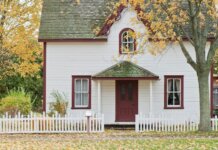The U.S. homeownership rate as of the end of the first quarter stood at about 64.2%, down 0.6 percentage points compared with the fourth quarter 2018, when it was 64.8%, but flat compared with the first quarter 2018, according to estimates from the U.S. Census Bureau.
The homeowner vacancy rate was 1.4%, flat compared with the fourth quarter but down 0.1 percentage points compared with the first quarter 2018, the it was 1.5%.
The rental vacancy rate stood at 7.0%, up 0.4 percentage points compared with the fourth quarter, when it was 6.6%, but flat compared with the first quarter of 2018.
Prior to the first quarter, the U.S. homeownership rate had grown for eight consecutive quarters on a year-over-year basis.
The flat change was due primarily to a strong uptick in new renter households, although growth among owner households continues to strongly outpace renters.
Ralph B. McLaughlin, deputy chief economist and executive of research and insights for CoreLogic says, “While short-run indicators may leave some turning toward a bearish outlook on the U.S. market, the fundamentals look solid. Household growth is strong, young people are starting to buy homes and there will be more than 40 million new households under 30 over the next two decades.
“If these trends don’t turn you into a housing market bull, nothing will,” McLaughlin adds in a recent post on the CoreLogic Insights blog.
Supplementing the U.S. Census data with its own mortgage application data, CoreLogic’s analysis finds that young homebuyer activity is picking up in the Sunbelt and falling along the East Coast and in the Mountain West.
For example, households under 45 are increasing their share of home purchase activity in Knoxville, Tenn. (+5.5 points), Vallejo, Calif. (+5.4 points) and Bakersfield, Calif. (+5.2 points), but decreasing their share in places like Reading, Penn. (-6.7 points), Boulder, Colo. (-5.1 points) and Harrisburg, Pa. (-4.2 points).
This shows increasing evidence that not only are young homebuyers indeed pursuing the American dream of homeownership, but solid household growth overall should continue to support healthy demand over the next two decades, McLaughlin writes.
An estimated 46 million new households under the age of 30 will push up demand for both owner and renter-occupied homes over the next two decades, he says.
Despite recent headwinds and signs of a market cool-down, these demographic fundamentals should lead to a healthy housing demand through at least 2040.












